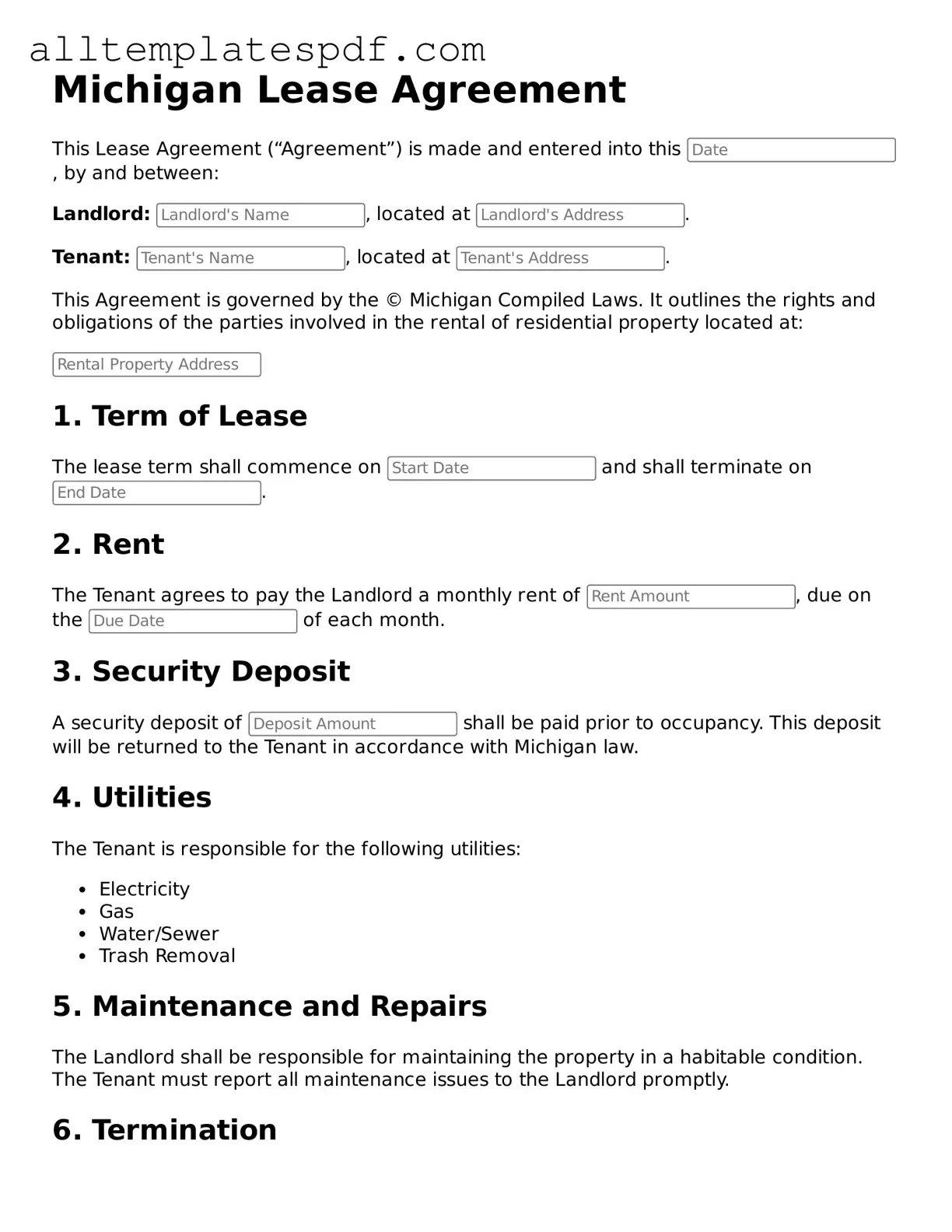Filling out a Michigan Lease Agreement form can seem straightforward, but many people make common mistakes that can lead to complications down the line. Understanding these pitfalls can save you time and trouble.
One frequent error is failing to include all necessary parties. Both the landlord and tenant must be clearly identified. Omitting a party can create confusion about who is responsible for obligations under the lease.
Another mistake is neglecting to specify the rental amount and payment terms. It’s essential to state the monthly rent and the due date. If these details are vague, disputes may arise regarding payment expectations.
Some individuals forget to outline the lease duration. A clear start and end date helps prevent misunderstandings. Without this information, tenants might assume they can stay indefinitely, leading to potential eviction issues.
Not addressing maintenance responsibilities is another common oversight. The lease should clearly define who is responsible for repairs and maintenance. This clarity helps avoid disagreements about who should fix what.
People often overlook the importance of including a security deposit clause. This section should specify the amount, conditions for its return, and any deductions that may be taken. A lack of clarity can lead to disputes when the lease ends.
Additionally, failing to list the rules regarding pets can create problems. If the lease is silent on pet policies, tenants may assume pets are allowed, potentially leading to issues with property damage or noise complaints.
Many forget to include the procedure for lease termination. It’s important to outline how either party can terminate the lease, including notice periods. This information protects both parties and ensures a smooth transition when the lease ends.
Another mistake is not addressing subleasing. If a tenant wants to sublet the property, the lease should clearly state whether it’s allowed and under what conditions. Without this information, tenants may feel restricted or landlords may face unexpected situations.
Finally, failing to review the lease for accuracy can lead to significant issues. It’s crucial to double-check all entries for typos or incorrect information. A small mistake can have serious legal implications, so thorough review is essential.
